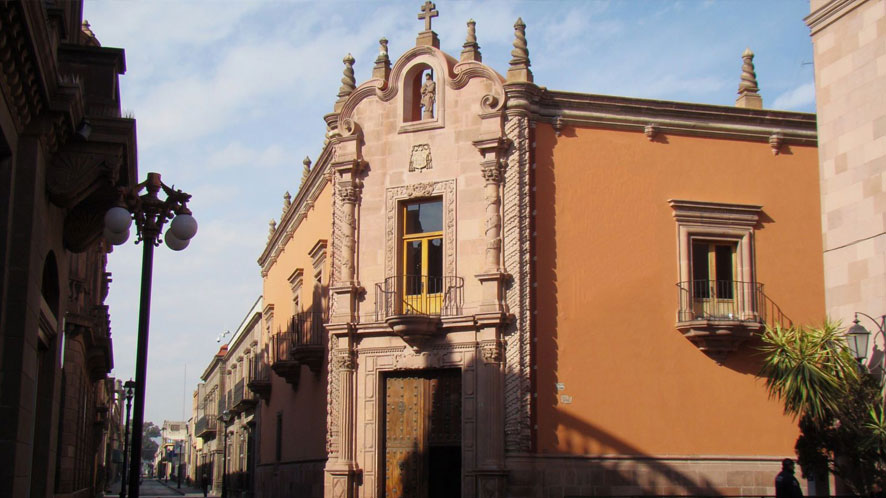Ordered to build by the Visitor José de Galvez, was Felipe Cleere, the royal treasurer of this Fund, and amateur architect, to take charge of the project of the building, its construction began in 1764, as recalled by the inscription in the key of the door. This is one of the few buildings of civil use still preserved from the Viceroyalty. Its function was to collect a fifth of the metals corresponding to the king. At the end of the Viceroyalty, he was given the use of a police station, customs and the residence of some governors and commanders. When the bishopric of San Luis Potosi was erected in 1854, President Santa Anna ceded this building to the Episcopal Palace, which was inhabited by His Excellency and the Rvdmo. Mr. Pedro Barajas from 1855 to 1858, His Excellency Mr. D. del Cande, Corona and his Excellency Mr. Ignacio Montes de Oca y Obregón. So does the seminary.
Its octagonal façade shows a rich Baroque style, which at the same time looked out over the old parish church, to the east, towards the Mint – also with an octagonal façade – on the opposite corner, or its gaze extended to San Miguelito, to the south. The wastefulness of its carved quarry is complemented and contrasted, rightly so, by the austerity and cleanliness of its walls. Above the main balcony is the Coat of Arms of His Excellency Mr. Ignacio Montes de Oca y Obregón, the last bishop to occupy this Episcopal Palace. In the open, semicircular niche, a beautiful stone sculpture of the Purisima, a gift from King Charles III of Spain to the city: it ends in a graceful quarry moulding resting on the columns of the second body and serves as a base for the Lorraine cross that rises on top and the four agile spirals.
From 1960 it was occupied by the Universidad Autonóma de San Luis Potosí, it is now a University Cultural Centre.

